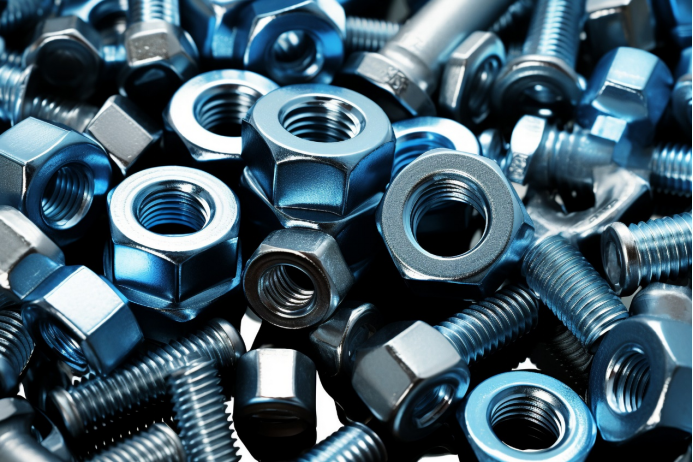

stud bolts and nuts
Nov . 05, 2024 18:02 Back to list
stud bolts and nuts
Understanding Stud Bolts and Nuts A Comprehensive Overview
In the world of mechanical engineering, fastening components play an essential role in the assembly and integrity of structures and machinery. Among these components, stud bolts and nuts are fundamental elements widely used in various applications, from construction to automotive manufacturing. This article delves into the fundamentals of stud bolts and nuts, exploring their types, applications, and importance in engineering.
What Are Stud Bolts?
A stud bolt is a type of fastener characterized by a long cylindrical body with threads on both ends, allowing for flexibility in fastening two or more components securely. Unlike standard bolts, which have a head, stud bolts rely on nuts to be fastened. The absence of a head ensures a uniform load distribution and allows maximum engagement into the materials being fastened.
Stud bolts can be categorized into several types based on their design and intended usage. Common variations include full-threaded studs, which have threads running the entire length, and partial-threaded studs, which have a smooth section in the middle. Each type serves distinct purposes. For example, full-threaded studs allow for an equal distribution of load along their length, ideal for high-stress applications, while partial-threaded studs provide enhanced grip by allowing more contact surface area between the nut and the bolt itself.
The Role of Nuts
Nuts are a matching fastener designed to work with bolts and studs to secure components together. Typically, nuts are hexagonal, providing a stable surface for wrenching. When paired with stud bolts, nuts can be tightened to a specific torque, ensuring a secure fit that can withstand different environmental conditions and mechanical loads.
stud bolts and nuts

Various types of nuts exist, including hex nuts, lock nuts, and flange nuts, each designed for specific applications. Hex nuts are the most common, but lock nuts, featuring a design that resists loosening during vibration, are critical in applications where vibrations are anticipated, such as in automotive or aerospace settings. Flange nuts, equipped with a built-in washer, distribute the load over a wider area and can help prevent damage to the mating surface.
Applications of Stud Bolts and Nuts
Stud bolts and nuts find extensive usage across numerous industries and applications. In the construction industry, they are essential for securing steel beams and structures, providing stability and strength to buildings and bridges. In the oil and gas sector, they are used to assemble flanges and piping systems, where high pressure and extreme temperatures demand reliable fastening solutions.
The automotive and aerospace industries rely heavily on stud bolts and nuts for assembling engines, suspensions, and airframes, where weight reduction and strength are paramount. In these applications, the materials used for stud bolts and nuts vary, ranging from high-strength steel to corrosion-resistant alloys, ensuring durability and performance under demanding conditions.
Importance in Safety and Reliability
The significance of stud bolts and nuts goes beyond their mechanical function; they play a vital role in safety and reliability. A failed connection due to improper fastening can lead to catastrophic outcomes, particularly in critical applications such as bridges, aircraft, and machinery. Therefore, selecting the appropriate type of stud bolt and nut, along with adhering to proper installation, torque specifications, and maintenance protocols, is crucial.
In summary, stud bolts and nuts are indispensable elements in mechanical assemblies, providing the necessary fastening solutions across various industries. Understanding their types, applications, and importance is essential for engineers and manufacturers alike, ensuring that structures and machines remain safe, reliable, and efficient. As technology advances and demands grow, the future of stud bolts and nuts will continue to evolve, adapting to new materials and applications while maintaining their core purpose in engineering design.
Latest news
-
High-Strength Hot-Dip Galvanized Bolts-Hebei Longze|Corrosion Resistance&High Strength
NewsJul.30,2025
-
Hot Dip Galvanized Bolts-Hebei Longze|Corrosion Resistance&High Strength
NewsJul.30,2025
-
Hot Dip Galvanized Bolts - Hebei Longze | Corrosion Resistance, High Strength
NewsJul.30,2025
-
High-Strength Hot Dip Galvanized Bolts-Hebei Longze|Corrosion Resistance, Grade 8.8
NewsJul.30,2025
-
Hot Dip Galvanized Bolts-Hebei Longze|Corrosion Resistance,High Strength
NewsJul.29,2025
-
High-Strength Hot Dip Galvanized Bolts - Hebei Longze Metal Products Manufacturing Co., Ltd.|corrosion resistance&high strength
NewsJul.29,2025

